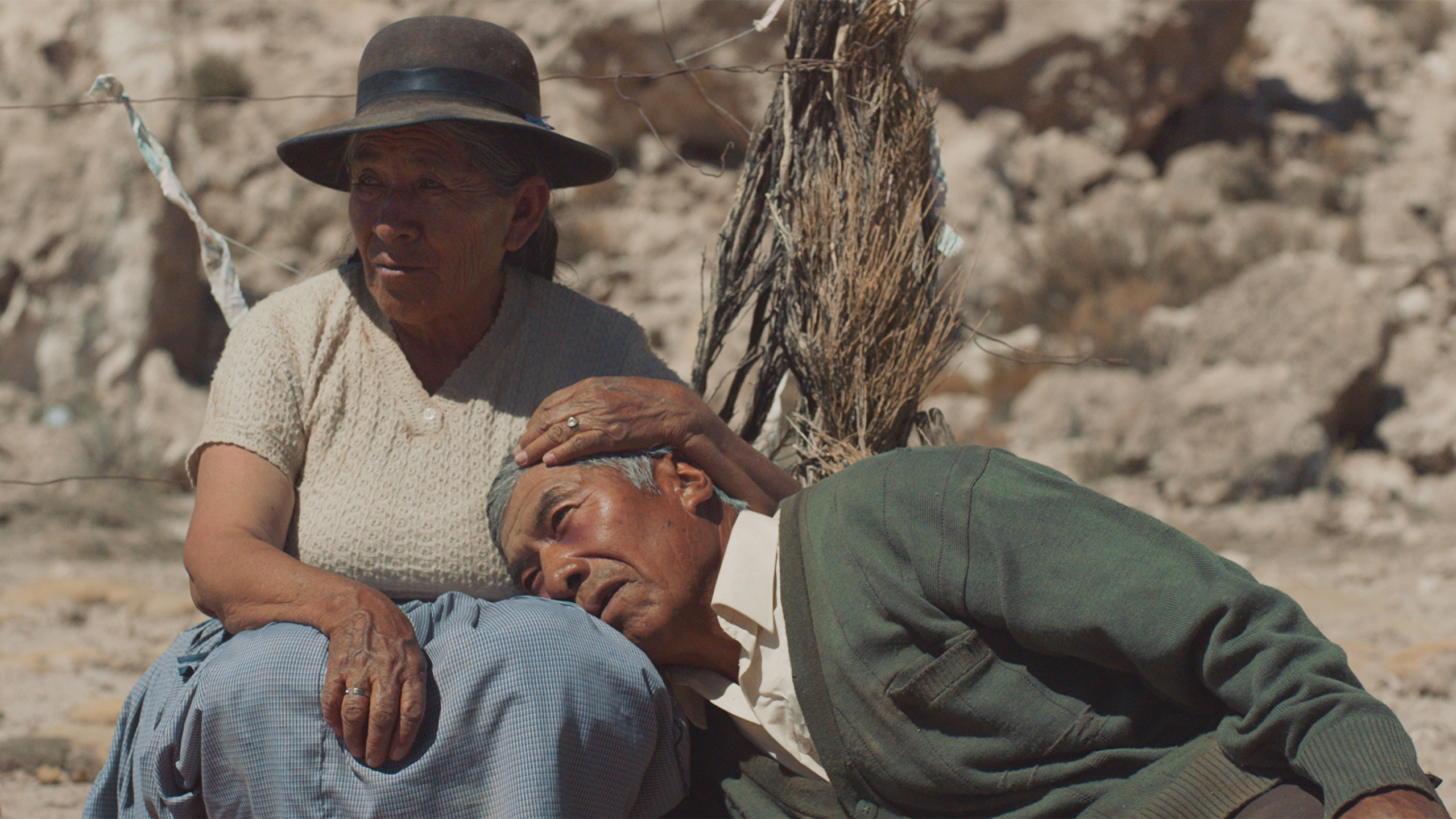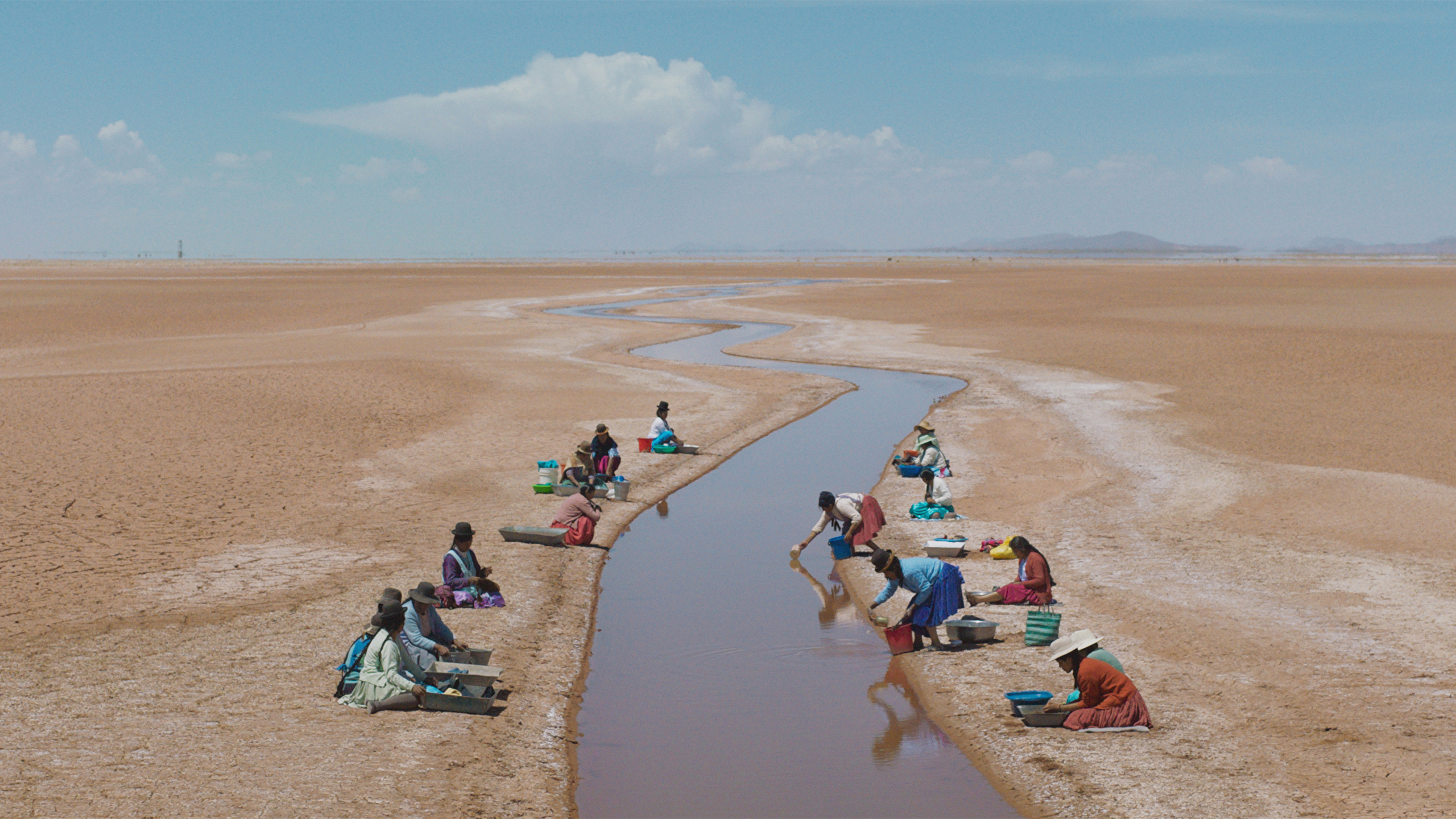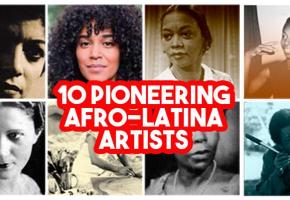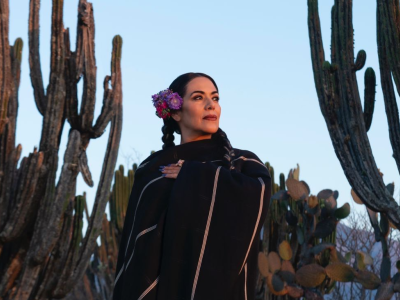In the Bolivian highlands, at more than 3500 meters above sea level, where rainy seasons are becoming shorter, droughts are lasting longer, nights are getting colder and days hotter, we are introduced to a Quechua couple, Virginio (José Calcina) and Sisa (Luisa Quispe) and given an insight into their daily routine.
While Virginio takes care of the llamas, and Sisa looks after the house and goes to the nearby village to get water, various conversations with their friends address the quest for survival in their home, one of the most exposed and most vulnerable territories to climate change on Earth.
Early on in the film, it’s revealed there is no more water, and many of the families are forced to leave for the city. Many elders are reluctant to join the enormous migration of recent years that has left the Bolivian countryside increasingly uninhabited. At first glance, it seems like Virginio and Sisa aren't considering a change. But then, unexpectedly, their grandson, Clever (Santos Choque), shows up and says that it's time for his grandparents to move to the city with him.
Apart from the clear threat of climate change, which is never directly mentioned, family issues arise, and these let in a deeper exploration into the characters’ interactions. The dialogue is sparse, but the care, concern, devastation and fear transmitted through their stares and expressions, tell us everything we need to know.
The overlaps between their Quechua and Spanish language are fascinating. The elderly couple speak to each other in Quechua, whereas their grandson only speaks Spanish and doesn’t understand the native language, another unspoken sign of how their culture has been eroded over generations.
As the film navigates between impending uncertainty and the couple’s steady day to day life, a deep empathy for this family develops as we understand the problems they face, including neglect and indifference when the family ask for help from the local government.

The film's slow pace helps establish the nature of the characters' way of life. The difficulty in holding the audience's attention is mitigated by the magical soundtrack, evoking the landscape of the Bolivian highlands. Alejandro Grillo and Fabian Oliver’s score captures the essence of the landscape and transforms the cinematography into a vivid and mesmerising experience.
The Quechua’s flute, the Quena, is present most of the time. The lapse between the soundtrack and the film's noises, such as Virgilio’s breathing and the llamas’ calling, adds an intense, compelling mix.
Barbara Alvarez’s cinematographic work completes the experience - the unique shots of rural Bolivia and precise transitions offers a feeling of belonging as the public follows the couple's every move, for example the symmetry of llamas walking and leaving the frame. These shots capture the essence of the cruel reality, with waves in the frame evoking the heat, the pale colours of the land, and the wide, bright blue cloudless skies.
All the way through the mesmerising appearance of the condor, a creature that represents the journey of life and death, the cycle of life, as Virgilio explains, symbolises the message of the film.
With symbolism and subtlety, Utama highlights the devastation being imposed on these communities, through the invisible hand of man-made climate change, and their powerlessness to change them. It explores themes of home and identity, and highlights the fight for the survival, physical but also of tradition and culture. It addresses the family relationships and issues that a Hispanic audience, in particular, might relate to, but are also universal.
Read our interview with the director here
















